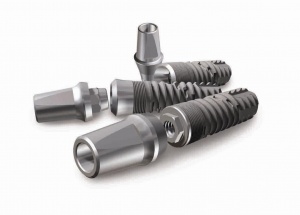Dental implants represent a significant advancement in restorative dentistry, offering individuals with missing teeth a durable and aesthetically pleasing solution to regain their dental function and confidence. For those receiving in-home care, including elder care, senior care, or individuals managing chronic health conditions, the prospect of dental implants brings forth considerations of accessibility, suitability, and the overall integration of such treatments into their personalized care plans. Understanding the types of dental implants available is crucial for these individuals and their caregivers, as it not only affects the outcome of the dental restoration but also impacts the planning and execution of in-home care strategies. This exploration into the various dental implant options aims to shed light on how these procedures can be tailored to meet the unique needs of in-home care recipients, ensuring that dental health is a prioritized aspect of their overall well-being.
The journey towards selecting the right dental implant involves navigating between endosteal and subperiosteal options, each with its own set of indications based on the patient’s jawbone health, medical history, and personal preferences. For in-home care recipients, the decision-making process is further nuanced by the need for comprehensive support—from pre-operative assessments to post-operative care—highlighting the integral role of caregivers in facilitating access to dental treatments. By closely examining the types of dental implants and understanding their specific considerations, in-home care providers can offer invaluable guidance and assistance, ensuring that the path to improved dental health is both smooth and aligned with the individual’s overall care objectives. This personalized approach not only enhances the success of dental implant procedures but also reinforces the importance of holistic care within the in-home care setting.
Types of Dental Implants and Their Considerations
Dental implants are categorized mainly by their placement and structure: endosteal implants, which are placed directly into the jawbone, and subperiosteal implants, which rest on top of the jawbone under the gum tissue. Endosteal implants are the most commonly used type, suitable for patients with a healthy jawbone to support the implant. Subperiosteal implants serve as an alternative for patients who may not have enough healthy jawbone and wish to avoid additional procedures like bone augmentation.
- Endosteal Implants: These implants involve a two-stage process where the implant post is first inserted into the jawbone, followed by the attachment of an artificial tooth (or teeth) to the post once the gum tissue has healed. For in-home care recipients, the consideration here involves the need for multiple dental visits and the capacity to heal properly, which can be influenced by factors like age, bone density, and overall health.
- Subperiosteal Implants: This less common option may be considered for patients who cannot undergo a bone augmentation procedure to rebuild the jawbone. Subperiosteal implants might be a viable alternative, offering a less invasive solution that requires careful planning and consideration of the individual’s specific health status and in-home care needs.
Supporting Dental Implant Care in In-Home Settings
For in-home care recipients considering dental implants, the role of caregivers and healthcare providers is instrumental in ensuring a smooth and successful process. This includes:
- Pre-Operative Assessment: Assisting with arranging consultations and evaluations to determine the most suitable type of dental implant, considering the patient’s health, jawbone condition, and personal preferences.
- Post-Operative Care: Providing support with follow-up appointments, medication management, and oral hygiene practices to ensure proper healing and implant success. Caregivers can also help monitor for any signs of complications or discomfort.
- Nutritional Support: Offering guidance on dietary choices that promote healing while avoiding foods that could compromise the implant site, especially during the initial healing period.




